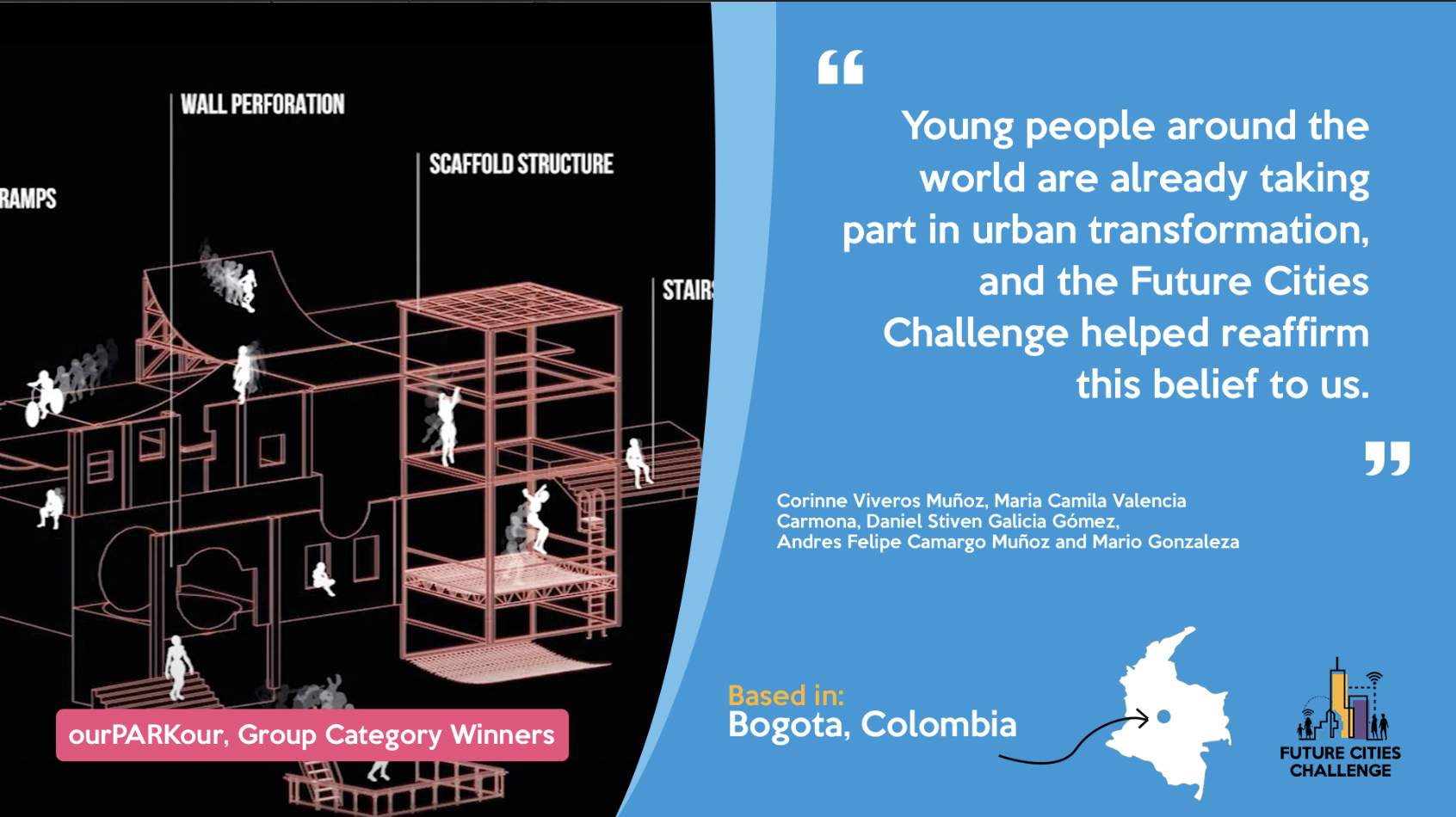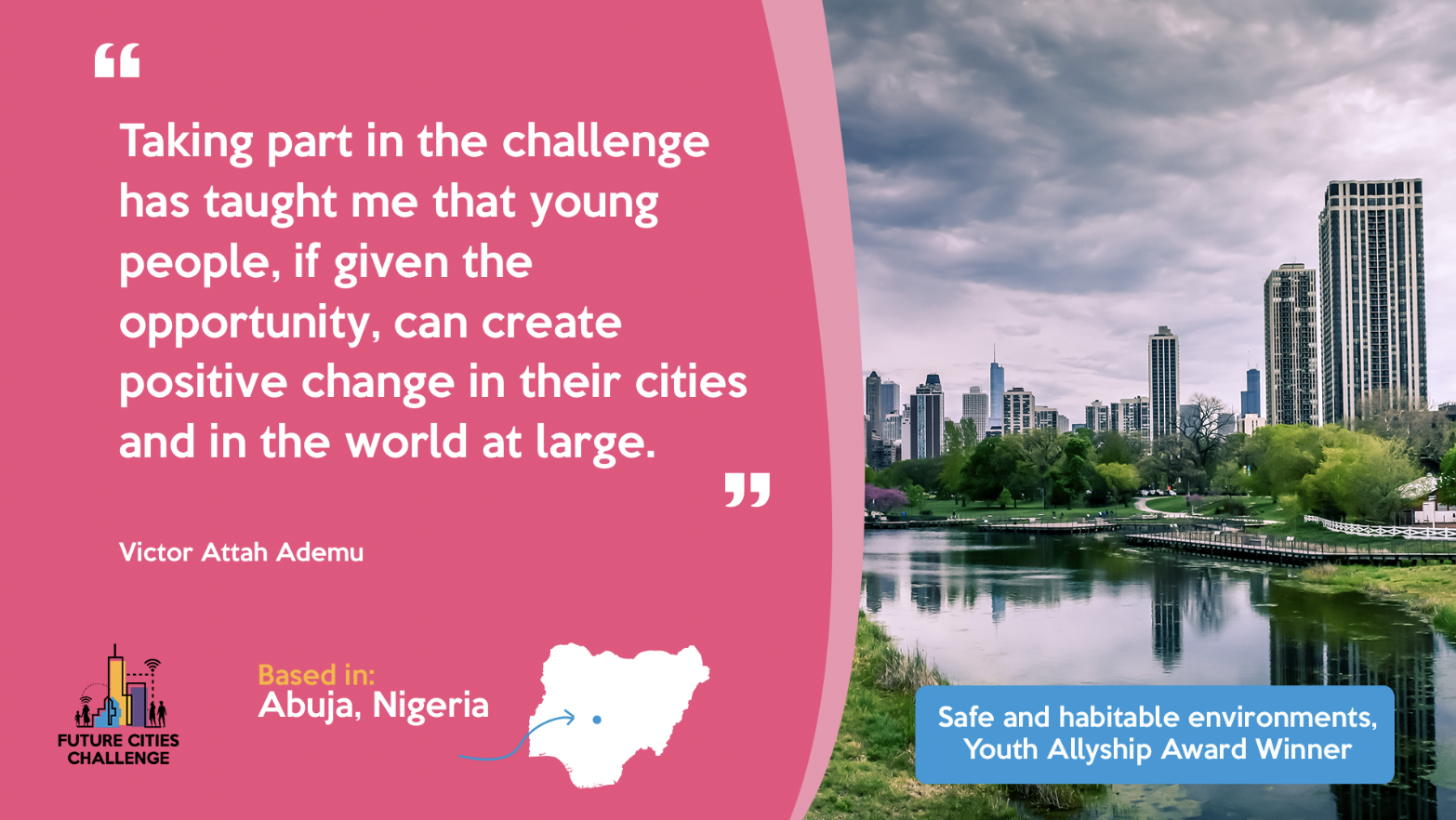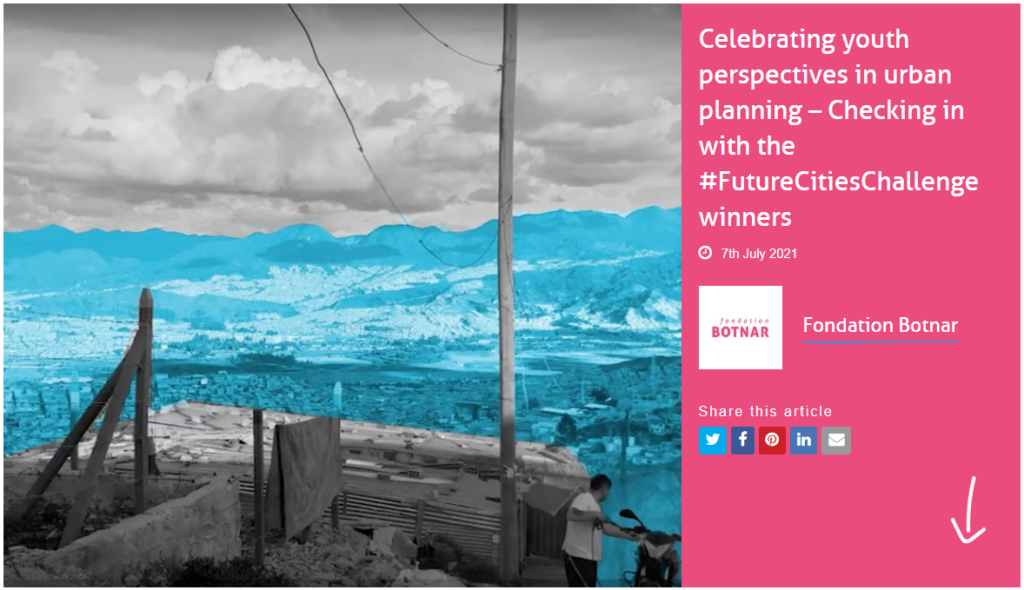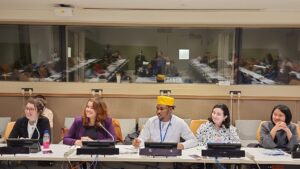In the face of the pandemic, young people from all over the world have demonstrated a willingness and desire to help rebuild their cities in a way that would ensure all citizens, especially young people, can thrive. In the coming decades, they will be leading the future of our cities, but unfortunately their voices and perspectives on urban issues are often left out of key discussions.
Last year we launched the Future Cities Challenge with UN-Habitat, with the aim to give young people the chance to create their dream city and prioritise the things that are important to them. Out of over 70 outstanding submissions we selected our winning projects, all of which aimed to tackle key issues facing young people today in their cities. From ways to improve the accessibility of walkways to methods of reducing waste, the final submissions demonstrated the inspiring creativity and innovation that young people’s perspectives can bring. In this blog, we are catching up with the winners to hear their reflections on the challenge and what they have done since to bring youth perspectives into urban development.
We were truly inspired by how you all brought your unique perspectives into your projects, proving the worth of inviting young people in conversations around urban design and development. Did the challenge make you rethink the role of young people in this area?

The challenge definitely made me rethink the role of young people in urban design and development. Their involvement helps to build ideal cities that are fit for young people to achieve their fullest potential. Since the challenge, I’ve tried to work on the waste disposal process in my city and I’ve also planted trees in a bid to make my city healthier.
Victor Attah Ademu (Abuja, Nigeria)
Young people around the world are already taking part in urban transformation, and the Future Cities Challenge helped reaffirm this belief to us. The challenge gave us the opportunity to learn about many interesting proposals, leaving us full of hope for the future of our cities, and a great desire to continue developing and materializing projects.
Corinne Viveros Muñoz, Maria Camila Valencia Carmona, Daniel Stiven Galicia Gómez, Andres Felipe Camargo Muñoz and Mario Gonzalez (Cali, Colombia)
What have you been doing since the challenge to contribute to your own communities and cities?
I gave a presentation on the importance of making the right food choices and using green space in an environmentally positive way. In our student council, we plan to grow our own veggies and design sustainable solutions around food so we can all stay healthy.
Aditya Singh (Caracas, Venezuela)
To foster better cities and better communities I have a youth group called Black Gold and we have been creating proposals to promote urban gardening and how neighbourhoods can be more green.
Lydia Gachau (Thika, Kenya)
We are currently volunteering with other architects and architecture students, to rebuild the church of the municipality of Coqui, Choco. Nowadays, the chapel is in a bad condition and the construction is collapsing. For this reason, we are collaborating with the community, to design a new chapel with the right conditions to be a functional space. We already finished the design and are currently collecting funds for its construction.
Corinne Viveros Muñoz, Maria Camila Valencia Carmona, Daniel Stiven Galicia Gómez, Andres Felipe Camargo Muñoz and Mario Gonzalez (Cali, Colombia)
As winners of the Future Cities Challenge you were awarded USD 1,000 to spend on educational courses to further your learnings around your interests! Which courses did you enroll in?
I used the prize money to enroll in two courses, which were also a result of my reading on Fondation Botnar and the role of innovation and AI used to improve our future. I learnt about python programming and created some games and learnt how python works. Also, I had enrolled in Spatial Computational Thinking from NUS on edx, which I will be doing in the summer break to learn in-depth about engineering principles and designing.
Aditya Singh (Caracas, Venezuela)
Valentina, my partner, bought a computer and took an online English course. I paid for a part of my specialization in public policies of caring with a gender perspective from the CLACSO (virtual)
Michelle Zuluaga (Cali, Colombia)
We learnt a lot from you all through your creative projects, what’s one thing you learnt from taking part in the challenge?

“Taking part in the challenge has changed my life fully, I am more aware of myself and my purpose. I’m still working towards finishing university and starting a startup for Black gold as we have goals to change how waste is perceived in Kenya and the world at large.
Lydia Gachau (Thika, Kenya)
It has inspired us to keep designing and developing projects with a social purpose. It has helped us to realize that we are capable of changing our urban environment. In addition, we were very surprised to see how easily people can connect all around the world. When we saw the other projects that were presented, we were able to learn about many other inspiring initiatives.
Corinne Viveros Muñoz, Maria Camila Valencia Carmona, Daniel Stiven Galicia Gómez, Andres Felipe Camargo Muñoz and Mario Gonzalez (Cali, Colombia)
Taking part in the challenge has taught me that young people, if given the opportunity, can create positive change in their cities and in the world at large.
Victor Attah Ademu (Abuja, Nigeria)
At Fondation Botnar, we are excited to see the impact young people are making throughout their communities and environments. We look forward to creating more opportunities for young people to use their creativity and unique insights to create a vision of their cities that is more sustainable, prosperous and allows young people to thrive.


